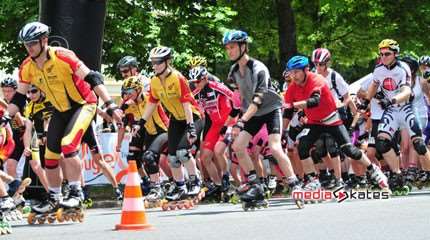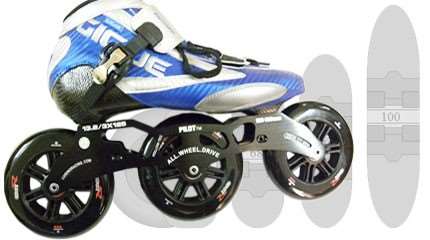Testing the 3×125 mm set-up
5x80, 5x84, 4x100 and now 3x125 mm? Even if the FIRS hasn't yet authorized the diameter, brands like Powerslide actively campaign for it. It would undeniably reinvigorate the market, but what about performances? Here are the first impressions of OLS…
Par alfathor
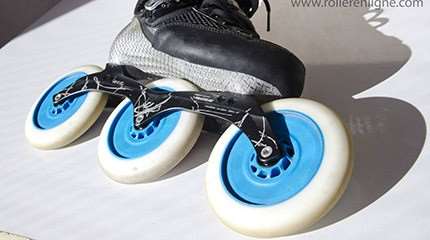
Testing…
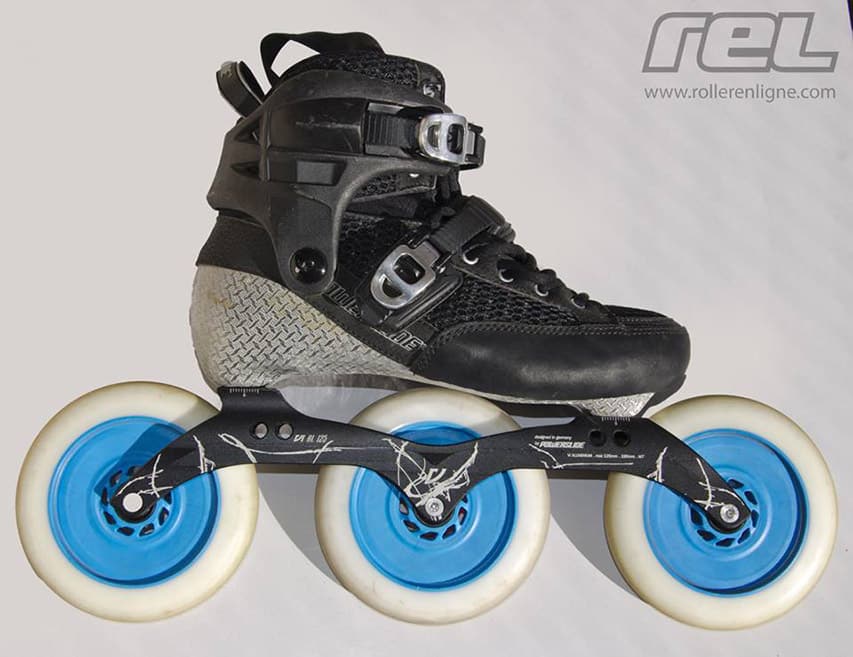
Powerslide and Scott Arlidge had the kindness to send us prototypes of 125 mm wheels with fitting frames. We jumped at the chance. In order to test that equipment in optimal conditions, we chose to mount them on a semi-high cut boot rather than on a low-cut speed boot. We left high level skaters assess the 3×125 mm with their competition equipment. This will be the topic of another article.
Factual data
The weight of the wheels that were tested is ‘reasonable’ according to their diameter: 182 grams per wheel, heavier than 110 mm wheels, which are around 148 grams. You find yourself with a 34 gram excess per wheel… However there are only 6 wheels for a 3×125 mm set-up, contrary to 4×110 set-ups which have 8 wheels.
With 220 grams, the frame is a bit heavier than a 4×110. It is probably due to the fact that it needs to withstand greater torsions on less points. Most of the 4×110 mm frames on the market weight between 190 and 220 grams.
As for total weight, you gain about 100 grams per skate compared to a 4×110 mm set-up. Weight is thus not a key-argument.
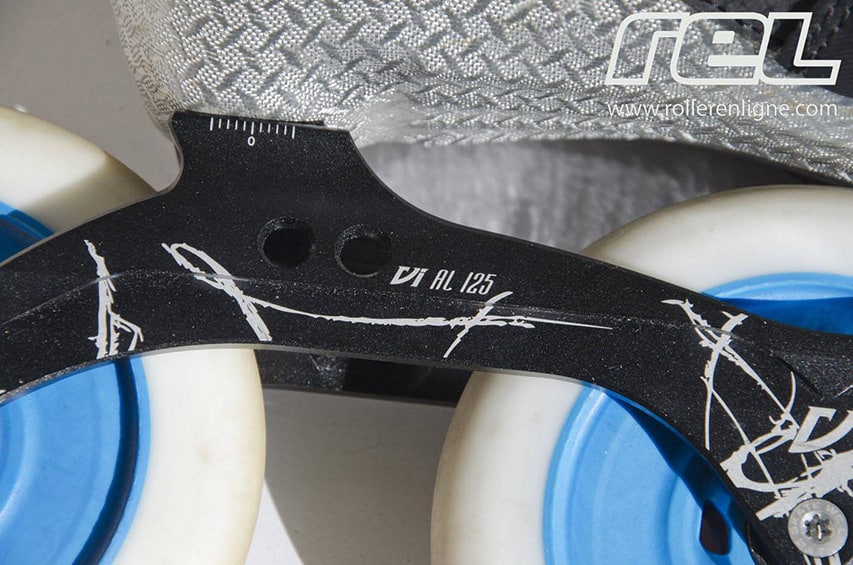
The bigger the wheel, the smoother the ground
That DIY saying has proven correct along the years: the bigger the diameter of the wheel, the easier it is to handle damaged grounds. The least to say is that with such a diameter increase, even cobblestones are easier to skate! You keep a good speed on damaged ground, smoothed by that height bonus… This should make treks more enjoyable for long distance skaters. There has been a considerable evolution as for comfort since 5×80 mm set-ups!
And what about height?
There is not much height difference with the 4×110 mm. The middle wheel almost brushes the boot. Manufacturers should probably slightly increase the height of the carbon part of their boots in order to reduce stresses on the ankles.
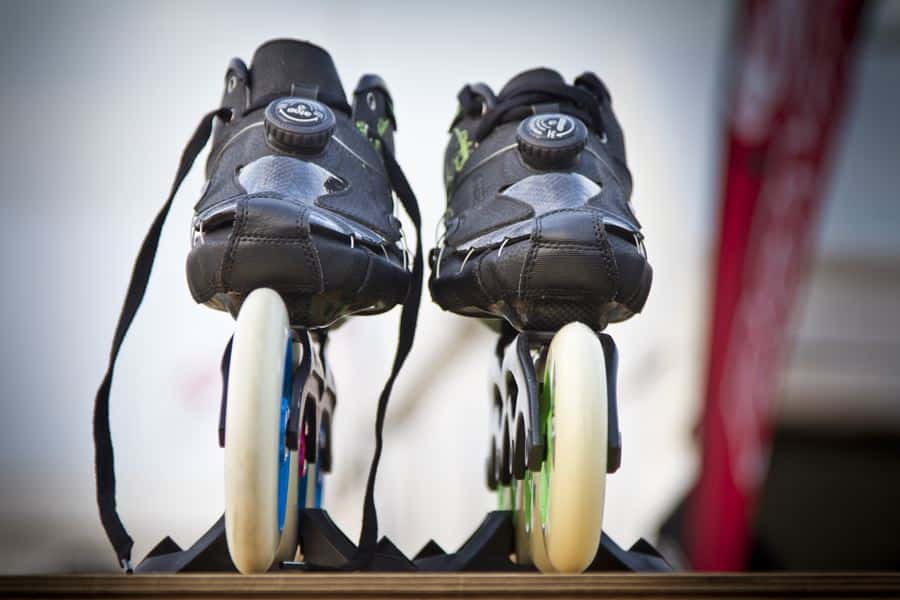
Gaining speed takes more time
The 3×125 takes long to really get started, but not more than the 4×110 mm. The real difference can be felt when you get more speed from an initial momentum. The 125 have more inertia than the 110. You’d better not have to deal with an attack from a skater with a small diameter, because he may widen the gap and take off. However, on the long run, the rolling gain may enable you to catch up strongly. For uphill slopes, you should work on your technique in order to skate clean and remain efficient.
Braking takes longer
Once started, the 3×125 mm offer impressive rolling sensations… But you should reach at least 30 kph in order to realize how much faster they can go. One more little push and you gain a dozen kph… and then you start wondering how you are going to avoid the passers-by coming towards you. Due to the mix of height and speed, you need a little more time to slow down. To sum up: the 125 mm is perfect for rolling routes without speed breaks.
Less handy?
Not easy to say. It seemed that it was harder to change directions quickly, which may be due to two factors: a bigger inertia of the wheels and a slightly bigger height.
Conclusion
For us, that diameter may prove to be very useful for long-distance treks on straight and rather flat routes. Damaged grounds become mere formalities. The set-up may be difficult to handle on circuits because of speed changes and tight bends – let’s mention Lyon or Rennes for example. On the other hand, there should be a lot of record breaking on circuits like Dijon. The 125 mm will also be harder to handle during breakaways. It’s hard to do big speed differences and start strongly unless everybody has the same equipment. According to us, the 125 mm is going to change the physiognomy of races, at least at first. the overall speed are probably going to increase on monotonous routes, packs are probably going to go faster, but the number of breakaways is going to reduce. The 125 mm takes a long time to gain momentum but once started for good, you get amazing rolling sensations. That diameter is technically demanding. It needs a clean and wide stride. Unlike small skaters with explosive power, tall and powerful technique skaters should benefit from it.
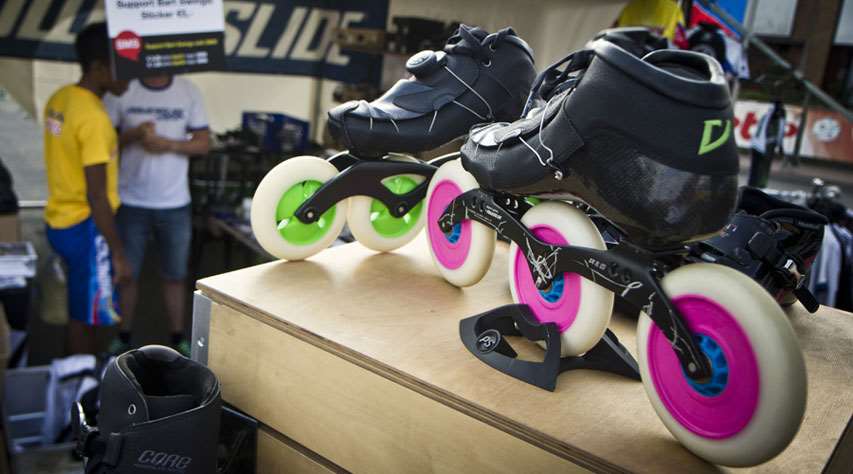
Useful links
Skate wheels: will the diameter race ever end?
110 mm: joint and muscle stressing
Sutton Atkins testing the 125mm setup
Translation: Chloé Seyres

